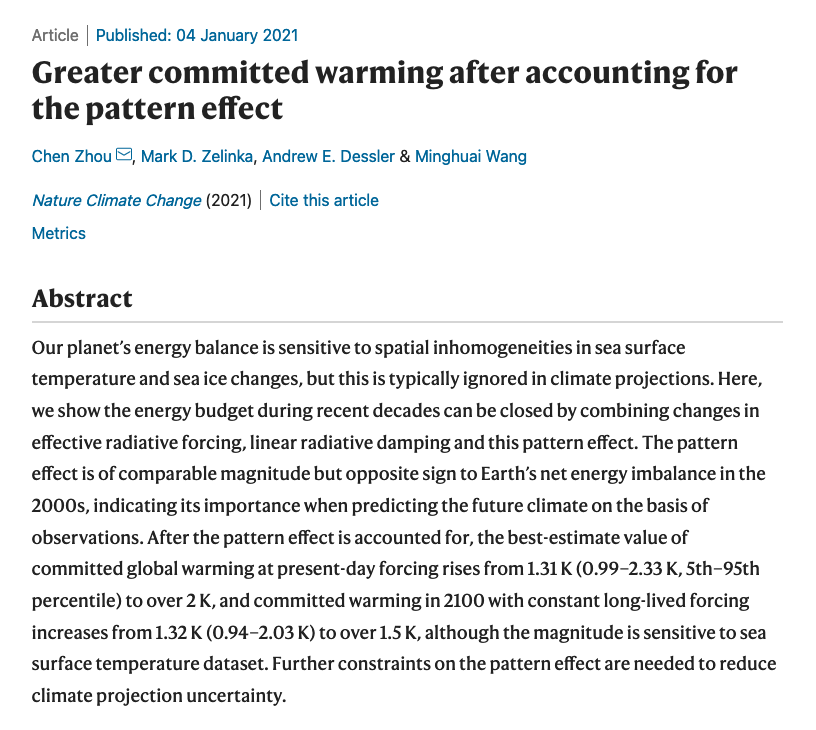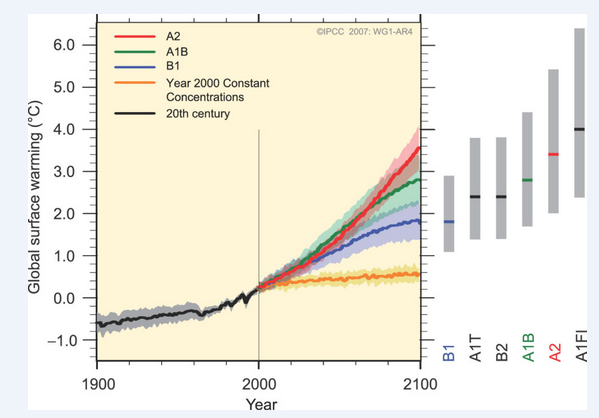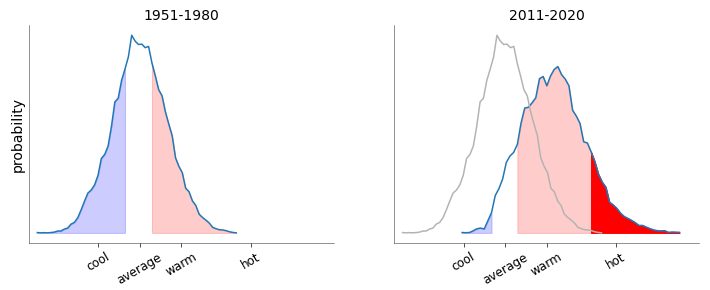
I'm a co-author on a new paper about committed warming! @mzelinka is a co-author, so you know it's good!
nature.com/articles/s4155…
nature.com/articles/s4155…

Here is an explainer video. I'm using the fancy video set-up I use for teaching.
"Committed warming" is a standard calculation that asks how much warming you would get if you held the atmospheric composition fixed at today's values indefinitely.
This figure from the IPCC AR4 report shows about 0.6°C of committed warming in 2100 (the yellow line).
This figure from the IPCC AR4 report shows about 0.6°C of committed warming in 2100 (the yellow line).

Our paper suggests that committed warming is larger than that — right now, we have experienced about 1°C of warming, and we are committed to 1.3°C of additional warming with fixed radiative forcing (although the error bars on this estimate are large).
This is not a prediction — holding atmospheric composition fixed is simply a convenient calculation models can do. It would be possible to have less future warming than we calculate if emissions go to zero soon.
Whatever the future emissions trajectory holds, however, our work suggests more future warming from our present climate than extrapolations from past warming (i.e., Mauritsen and Pincus, 10.1038/nclimate3357) or multi-model averages (as in the AR4).
Our calculation also emphasizes how hard it will be to keep warming below the Paris thresholds.
If people really want to achieve these targets, we need to accept the probability that we'll need to implement solar geoengineering.
If people really want to achieve these targets, we need to accept the probability that we'll need to implement solar geoengineering.
My personal opinion is to not focus so much on these targets. In the end, there's nothing magical about them — there's no reason to think that warming of 1.99°C is much better than 2.01°C.
Another piece of good news is that much of this committed warming may be very slow to arrive. If we can reduce emissions quickly, then we may still break 2°C, but it may be centuries in the future.
So, if you want to minimize climate impacts, focus on getting emissions down to zero as fast as possible. Regardless of what we're committed to, there is always benefit in avoiding additional warming.
btw, here's a non-paywalled link to the paper: rdcu.be/cc2Cj
• • •
Missing some Tweet in this thread? You can try to
force a refresh







